YouTube Shorts Analytics can be tricky, especially if you’re not sure what all those numbers mean.
And if you’re not tracking them at all? That’s a missed opportunity.
As a social media manager, you’re expected to create short-form content that grabs attention, but how do you know if it’s really working?
Spoiler: Views alone won’t tell you everything.
To truly measure success, you need to understand viewer retention, engagement, traffic sources, and how each Short plays into your bigger goals.
That’s where this guide comes in.
We’re breaking down YouTube Shorts Analytics in a simple, no-fluff way so you’ll know exactly what to track, where to find the data, and how to use it to level up your strategy.
If you want smarter content decisions and better results for your clients, let’s dive in.
What you will learn
- What is YouTube Shorts Analytics?
- Why is YouTube Shorts Analytics important?
- How to find your YouTube Shorts Analytics
- What to track in YouTube Shorts Analytics
- Vista Social: A powerful platform for YouTube Shorts Analytics
- How you can leverage YouTube Shorts Analytics to improve content performance
- What you can do wrong with YouTube Shorts Analytics
- FAQs on YouTube Shorts Analytics
- Ready to make YouTube Shorts Analytics work for you?
What is YouTube Shorts Analytics?
YouTube Shorts analytics is the data dashboard that shows how your short-form videos are performing on YouTube.
It gives you insights into key metrics such as views, watch time, audience retention, likes, shares, and traffic sources so you can see what’s working and what’s not.
YouTube Shorts Analytics offers a behind-the-scenes view of how viewers interact with your clients’ Shorts.
Are people watching your clients’ Shorts videos to the end?
Are they swiping away after a few seconds?
Which videos are pulling in the most traffic from the Shorts feed?
Whether you’re experimenting with trends, repurposing long-form content, or trying to grow your clients’ new channels, YouTube Shorts analytics can help you make smarter content decisions.
It eliminates the guesswork from your strategy, allowing you to focus on creating YouTube Shorts videos that drive results.
Why is YouTube Shorts Analytics important?
YouTube Shorts Analytics provides the insights you need to create content that actually performs, not just videos that look good.
You can’t afford to fly blind.
After all, the world of YouTube Shorts moves fast, and so do your clients’ audiences.
With analytics, you’re making informed decisions based on real viewer behavior rather than guessing what works.
Do you want to know why one Short went viral while another flopped?
Are you curious about whether viewers are sticking around or swiping away in the first three seconds?
Shorts analytics can answer these questions.
It also helps you spot trends, test content types, and understand what resonates with your audience so you can double down on what works.
And if you’re managing multiple clients or brands, having hard data to back your strategy makes you look like a pro (because you are).
Bottom line: YouTube Shorts video analytics helps you create smarter, more strategic content efficiently.
How to find your YouTube Shorts Analytics
Access YouTube Shorts Analytics easily with the step-by-step guide below.
View your YouTube Shorts Analytics on your desktop
To view a specific YouTube Shorts’ analytics, log in to YouTube Studio with your client’s login credentials.
You can also go to the YouTube homepage, click on your client’s profile picture, and select YouTube Studio.
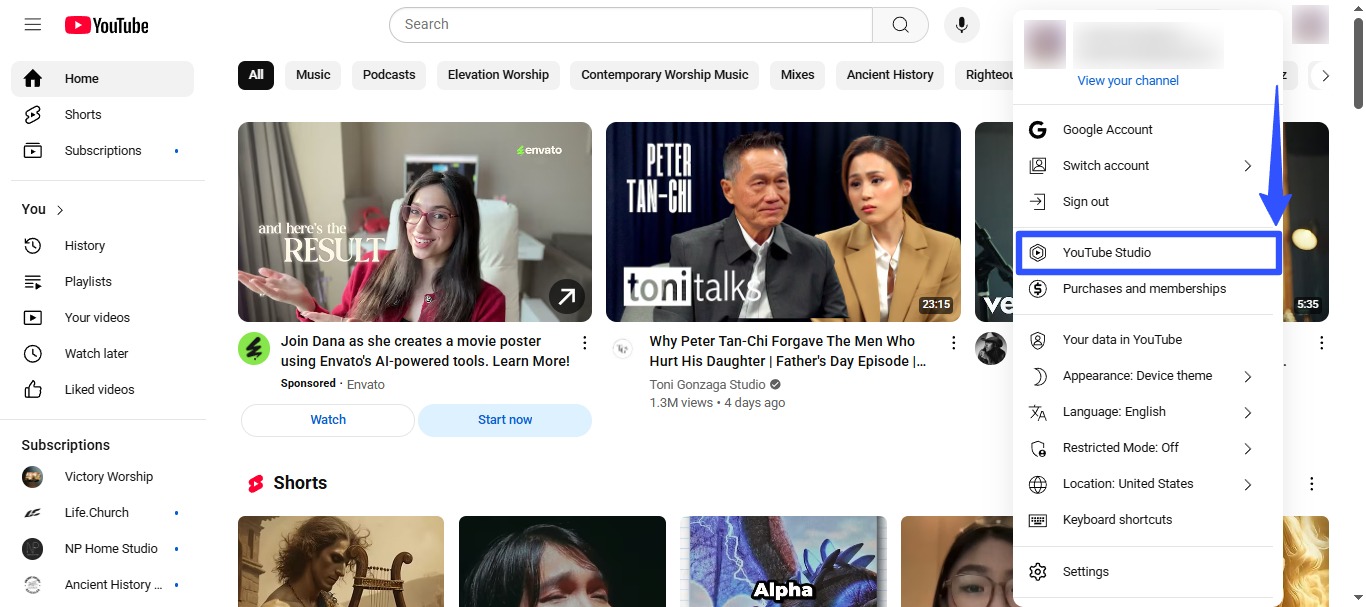
Select the Content tab on the left-hand menu to view all the videos uploaded to your clients’ YouTube channel.
Must read: 30+ YouTube Channel Ideas for 2025: Ultimate List
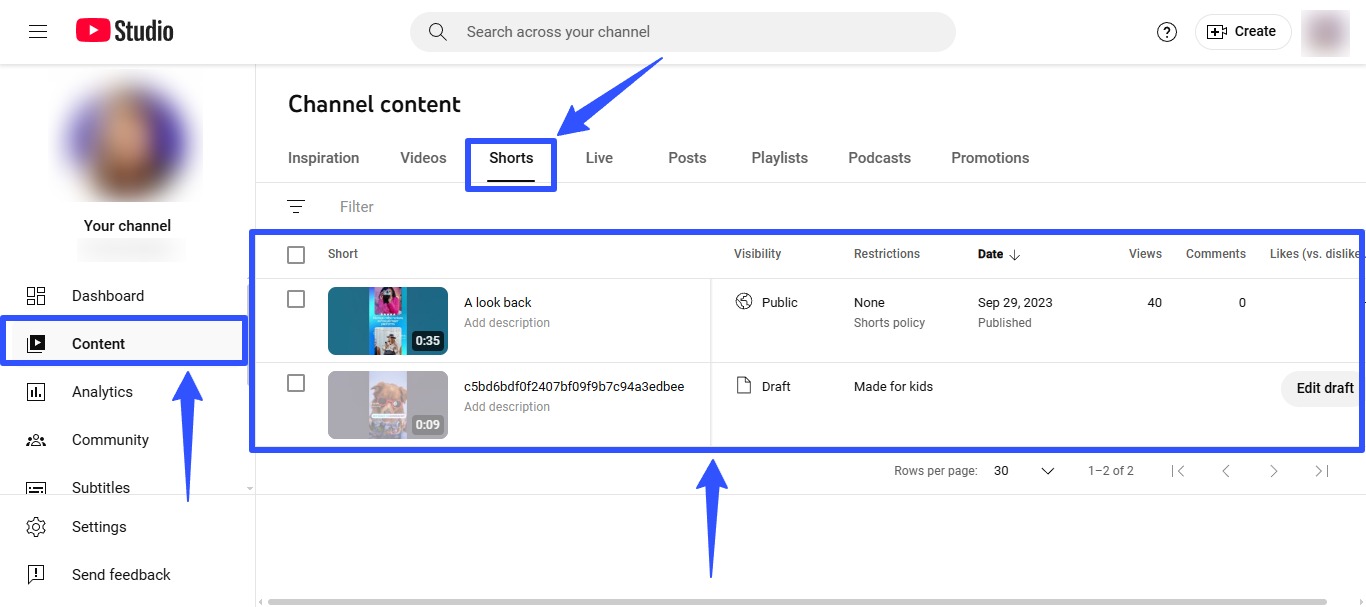
Click the Shorts tab, hover over the specific Shorts video, and select the Analytics icon.
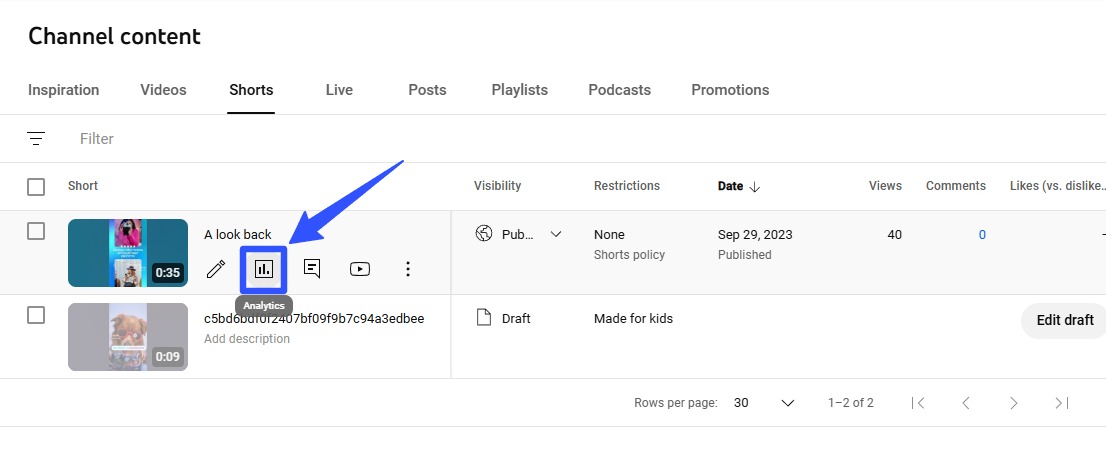
You’ll be directed to another page where you can view an overview of the video’s analytics, including reach, engagement, and audience data.
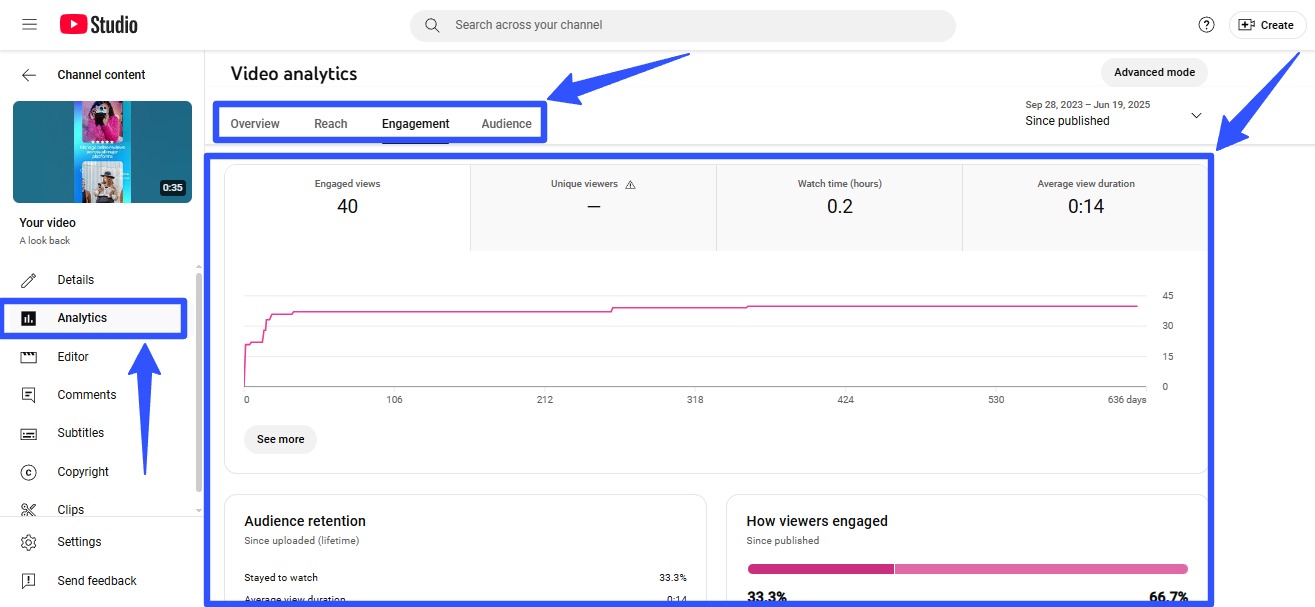
You can scroll through and click on the See more option in each section to gain deeper insights.
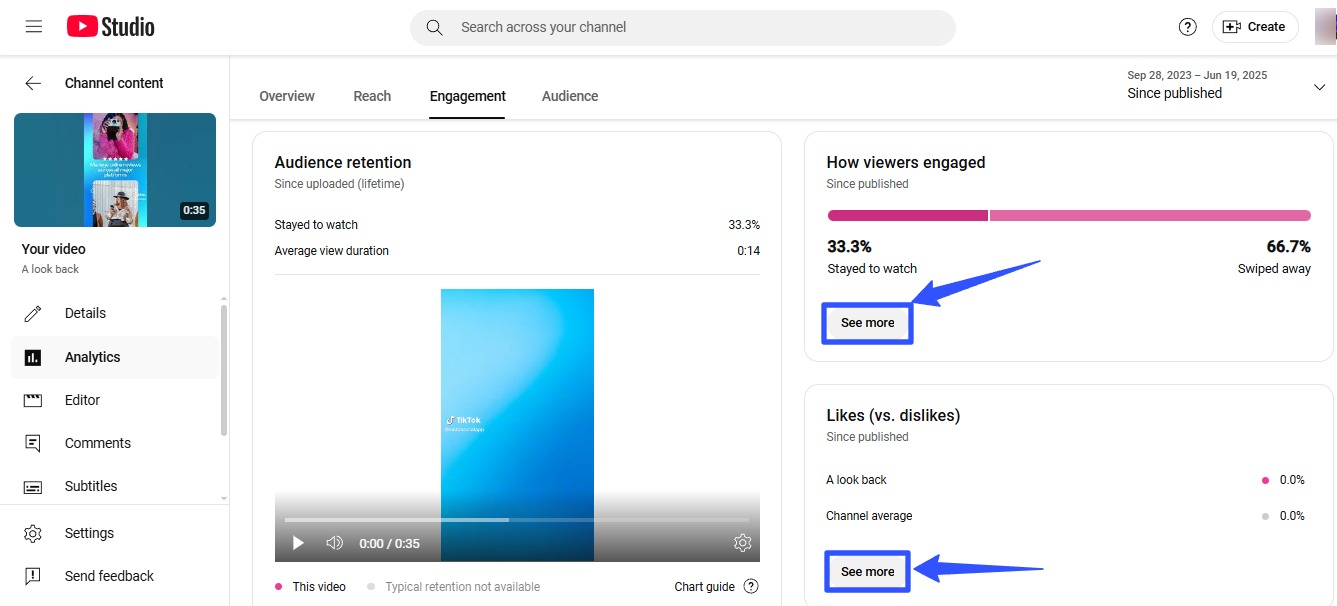
You can get a more granular view of the data and use filters to dive deeper into key metrics and insights.
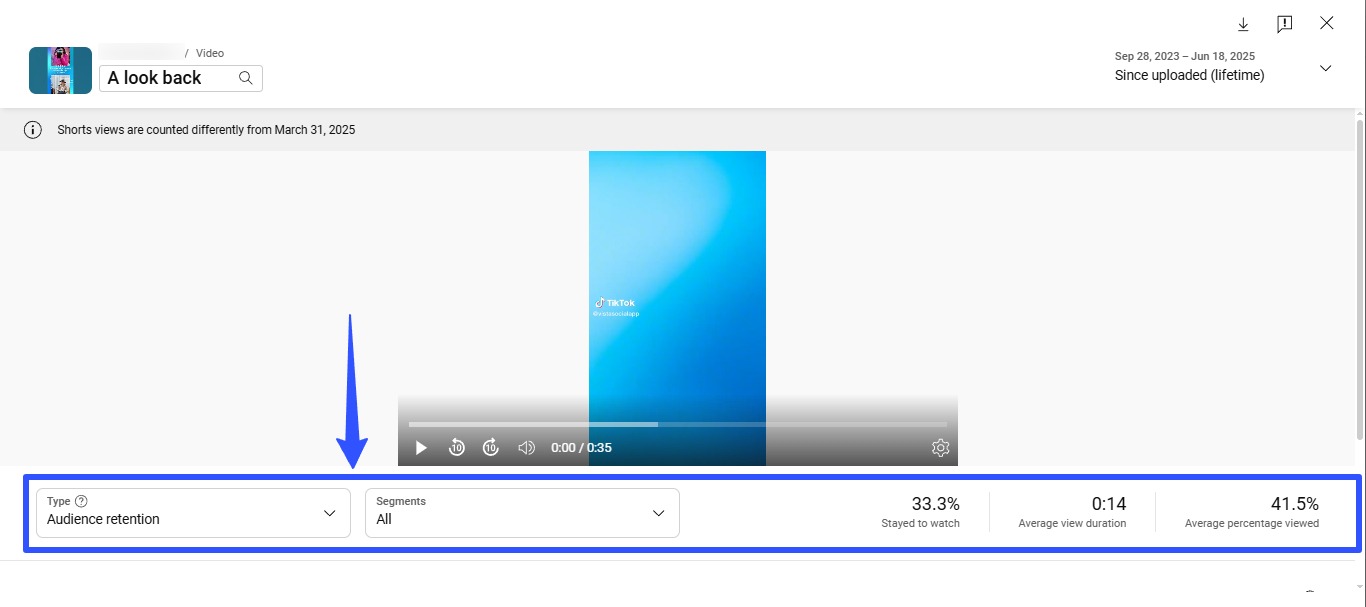
Click Advanced Mode to access groups, comparisons, filters, and more customizable charts.
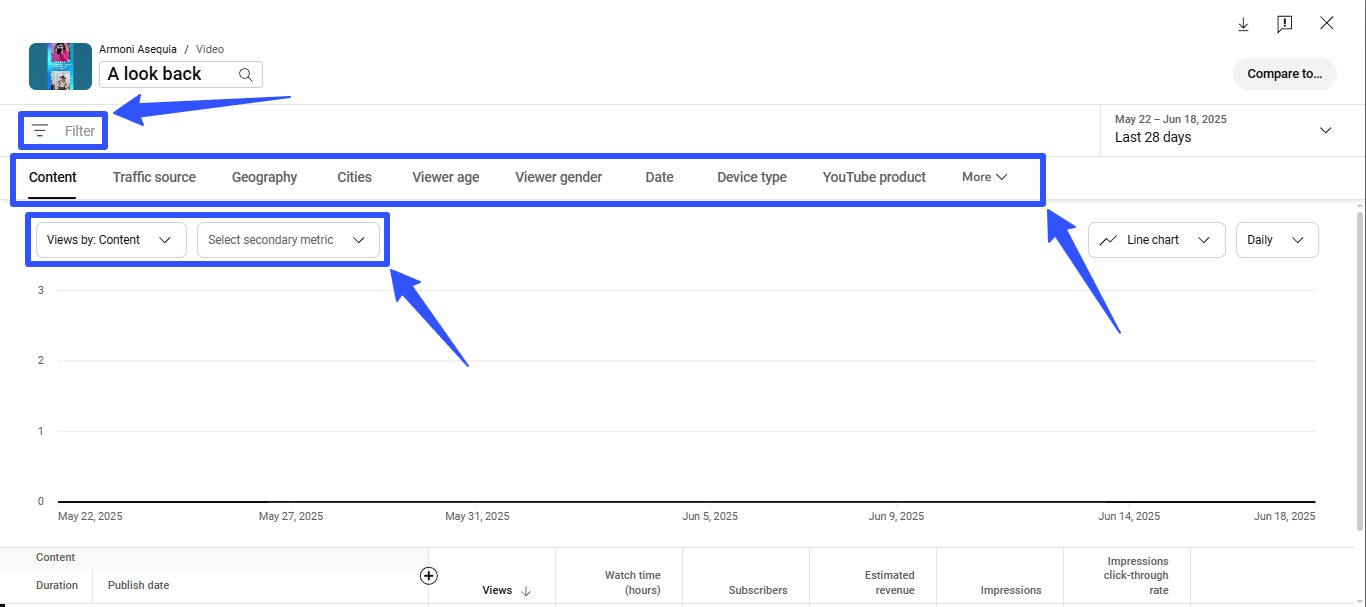
View your YouTube Shorts Analytics on mobile
The YouTube Studio app helps you track the performance of your clients’ channels via a mobile device.
After downloading and logging into the app (using your clients’ credentials), tap Analytics at the bottom of your screen.
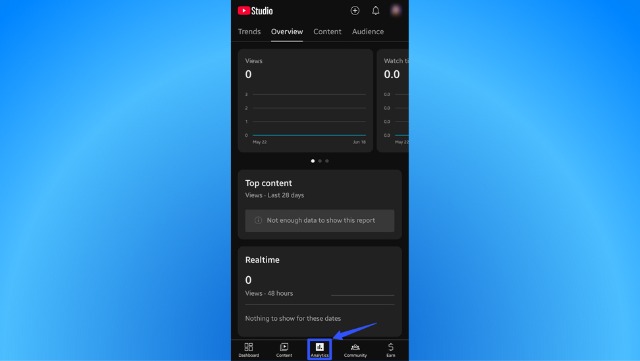
Tap on the tabs (Overview, Content, and Audience) to see the details, metrics, and key insights into your clients’ YouTube content performance.
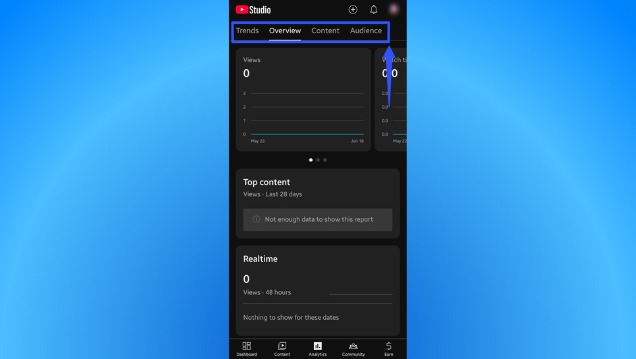
You can view reports from the channel or at the video level.
What to track in YouTube Shorts Analytics
Below are several key metrics to track for measuring your clients’ YouTube Shorts performance and fine-tuning your strategy.
Reach and Visibility metrics
To understand how many people see your clients’ Shorts and where they’re finding them, start with these reach and visibility metrics.
Views
Views are the most basic indicator of reach. They show how many times your client’s Short was watched.
While viral views (a high view count) can feel rewarding, it’s only one piece of the puzzle.
Views don’t account for how long someone watched or whether they engaged, so use this metric to gauge surface-level visibility, then dive deeper into watch and engagement data.
Impressions
Impressions track how often your client’s Shorts video was displayed to users across the Shorts feed, YouTube homepage, search results, or suggested content.
The metric helps you understand how widely your client’s content is being pushed by YouTube (or YouTube’s algorithm).
A high number of impressions combined with low engagement may mean your client’s content isn’t grabbing attention or needs a stronger hook.
Traffic Sources
The traffic sources metric tells you where your Shorts views come from, such as the Shorts feed, your client’s channel page, YouTube search, suggested videos, or external links.
If most of your clients’ traffic is from the Shorts feed, their video is likely well-optimized for short-form viewing.
If traffic is mostly from search or your client’s YouTube channel, you may need to work on the video’s hook or vertical formatting to perform better in the eyes of the Shorts algorithm.
Watch and Retention insights
Track and measure how long people watch your clients’ YouTube Shorts videos, where they tend to drop off, and identify what keeps viewers engaged.
Watch Time
Watch time measures the total number of minutes viewers have spent watching your client’s Shorts video.
The metric is a major ranking signal for the YouTube Shorts algorithm.
Must read: How the YouTube Shorts Algorithm Works [2025]: w/ Tips & FAQs
The longer people stay on your client’s content, the more likely the platform is to promote it to a wider audience.
Even a 30-second Short can rack up strong watch time if it’s compelling enough to replay or hold attention.
Average View Duration
The metric tells you the average time someone spends watching your client’s Shorts video.
Shorts max out at 60 seconds, so even a slight difference in view duration can be significant.
If viewers are only watching the first three to five seconds, your hook may not be strong enough.
On the other hand, a view duration near the full length can mean that your client’s content is highly engaging.
Audience Retention
The audience retention metric shows the percentage of your client’s video that viewers watched and when they dropped off.
A retention curve helps you see exactly where interest drops, whether it’s right at the start or midway through.
If you consistently lose viewers early, consider tweaking your opening seconds or using jump cuts to maintain the video’s energy and capture the audience’s attention.
Engagement metrics
The engagement metrics below can help you understand how YouTube audiences react to your clients’ Shorts and which videos spark the most interaction.
Likes
Likes are a lightweight and straightforward way for viewers to show their appreciation.
A high like-to-view ratio can indicate that your content resonates with your clients’ viewers, even if it doesn’t go viral.
It’s also helpful for comparing the effectiveness of your clients’ Shorts videos when testing various styles or formats.
Comments
Comments reflect deeper interaction with your clients’ Shorts videos.
They can show audience sentiment, questions, or interest in related topics.
Must read: 101+ Interesting Social Media Engagement Questions
Engaging in the comments also helps your clients build community and boosts their visibility, as YouTube may push videos that generate discussion.
Shares
Shares are a goldmine for organic reach.
If someone shares your client’s Shorts video, they likely find it valuable, funny, or informative enough to show someone else.
The share metric is one of the strongest signals of relevance and can lead to viral growth if your client’s content strikes the right chord among viewers.
Engagement Rate
The engagement rate combines likes, comments, and shares per view to give a holistic view of how your clients’ audiences interact with their Shorts content.
Must read: Social Media Engagement Examples & Winning Strategies
A high engagement rate can indicate that your client’s Shorts video is not just being watched but creating a reaction.
Measuring the engagement rate is especially useful when assessing various content themes or testing hooks.
Subscriber and Click Signals
Determine whether your clients’ Shorts videos are converting casual viewers into subscribers or motivating them to take action beyond the video using the metrics below.
Subscribers Gained
The Subscribers Gained tells you the number of people who subscribed after watching your client’s specific YouTube Shorts video.
It’s a great metric for understanding which content builds long-term value for your clients’ brands or channels.
Shorts videos that drive subscriptions usually have a clear message, strong branding, or compelling Calls-to-Action (CTAs).
Click-Through Rate (CTR)
It’s crucial to track CTR when your clients’ Shorts videos show up in YouTube search or their channel’s video tabs.
The metric measures the number of people who clicked to watch after seeing the title or thumbnail.
While CTR is not as central for Shorts in the feed (which auto-play), it still helps refine how you present your clients’ videos in searchable contexts.
Button Clicks
If your clients’ YouTube channels include links or CTAs such as “Visit Website,” “Learn More,” or custom links in the channel banner, tracking clicks on these buttons helps you measure intent and conversions.
It’s beneficial if your clients use Shorts as part of their larger sales funnel.
Audience and Contextual Data
The insights below can help you understand who’s watching your clients’ YouTube Shorts videos, where they’re from, and how they’re viewing the content.
Geography and Language
Knowing where your clients’ audiences are located and what language they speak helps you tailor your content, captions, and post times.
For instance, if most of your clients’ viewers are from Latin America, publishing at U.S. primetime won’t make sense.
Audience location and language can also inform your localization strategies and planning for multilingual YouTube Shorts and video content.
Device Type
Shorts are designed for vertical, mobile-first viewing, but it’s still useful to know how many people watch your clients’ Shorts videos on mobile versus desktop.
If a chunk of your clients’ Shorts viewers are on desktop and the videos are optimized for mobile only, you could be missing out on engagement opportunities for your clients.
Must read: 51+ Engagement Post Ideas for Social Media
Use the information on your viewers’ preferred device types to fine-tune your clients’ Shorts video format, font size, and framing.
Content Format Trends
The content format trends aren’t a single metric, but tracking which types of content, such as tutorials, memes, Q&As, and behind-the-scenes content, perform best over time provides valuable creative direction.
Use the insights from these metrics to double down on themes, formats, and even Shorts dimensions that resonate with your clients’ audiences while phasing out those that consistently underperform.
Must read: YouTube Shorts Dimensions | The ULTIMATE Guide [2025]
Vista Social: A powerful platform for YouTube Shorts Analytics
When it comes to tracking the performance of your clients’ YouTube Shorts, Vista Social stands out as a comprehensive and user-friendly solution.
Vista Social is an all-in-one social media management platform that offers seamless content scheduling, efficient engagement management, and robust analytics, designed to uncover what truly drives engagement.
The platform helps you extract the insights you need to make informed, data-driven decisions for your YouTube Shorts strategy.
To start tracking Shorts analytics, link your clients’ YouTube channels to Vista Social.
After logging into your Vista Social account, click the Quick Add option on the left-hand side menu and select Add Social Profile.
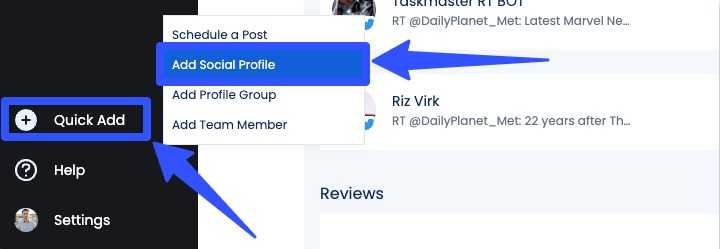
Select a profile group to add your client’s profile, or you can create a new one and click Continue.
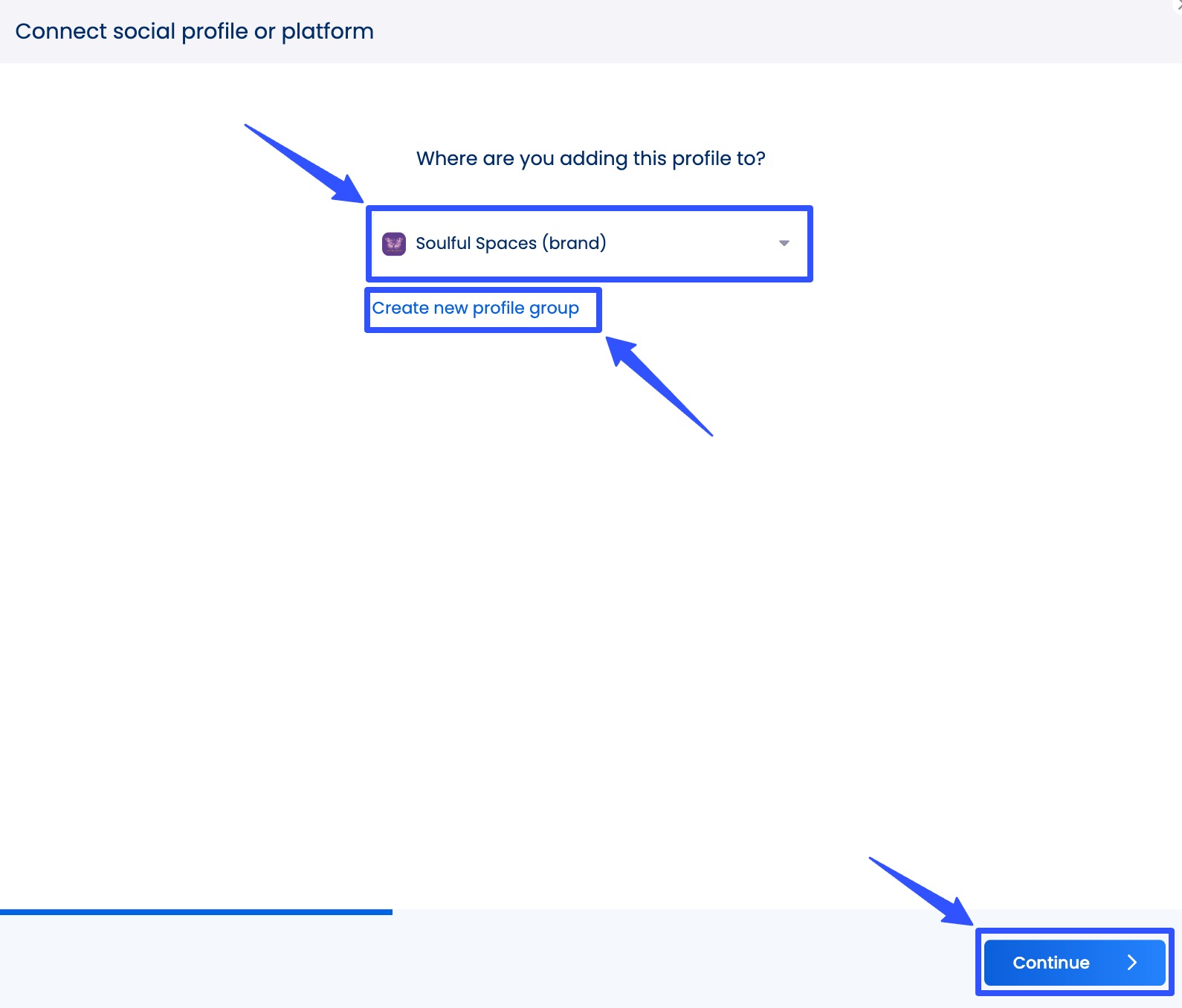
Click YouTube from the list of channels.
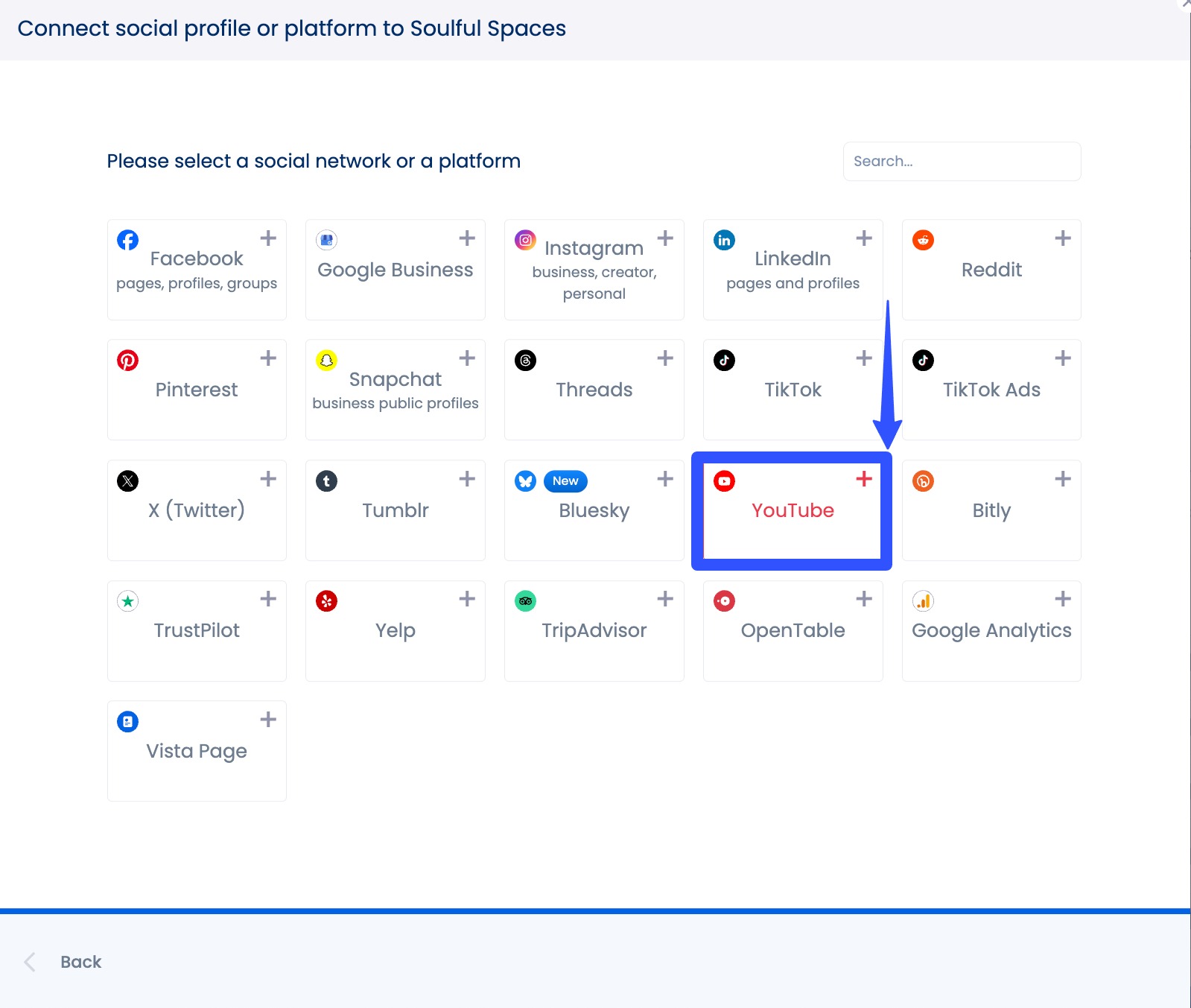
On the Google redirect page, tick all the boxes to authenticate access and click Continue.
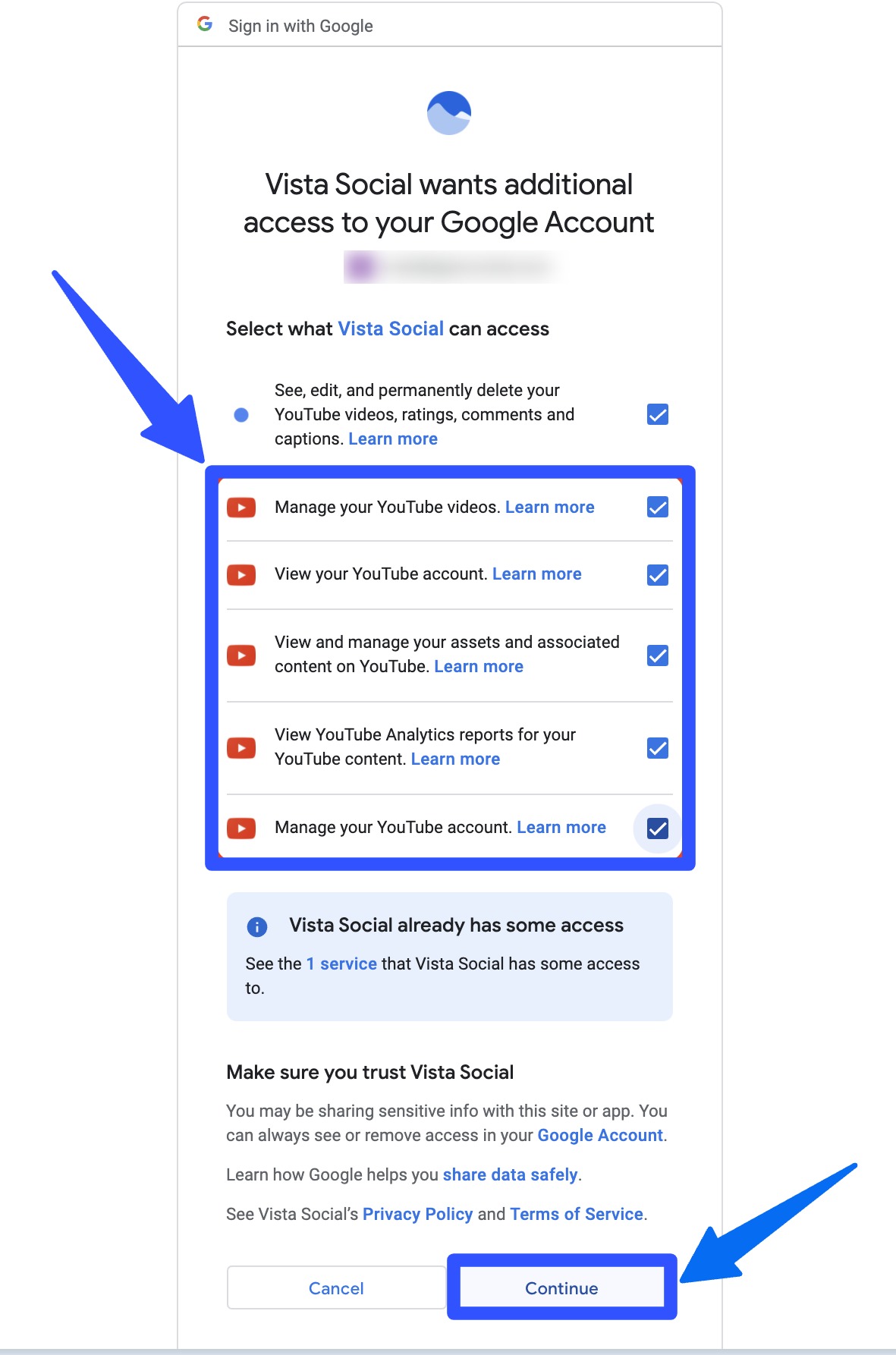
You must be logged in to the account with admin access to the YouTube channel that you want to connect to Vista Social.
Tip: Ensure your clients’ channels have YouTube’s Intermediate and Advanced features enabled, or some metrics may be unavailable.
You can view and manage your successfully connected YouTube channels and other profiles in Profile Management.

Vista Social’s social analytics tool will then start pulling data from your clients’ connected YouTube channels.
Must read: 20+ Social Analytics Tools in 2025: Free And Paid
To view your clients’ YouTube analytics, you can run a Social Media Performance Report or a Post Performance Report on Vista Social.
The YouTube metrics that the platform tracks and analyzes through the Social Media Performance Report include the following.
- Summary of subscribers, views, videos, and engagement for the selected period
- Subscriber growth
- Engagement based on likes, dislikes, comments, and shares
- Views
Must read: How to Get More Views on YouTube Shorts [2025]
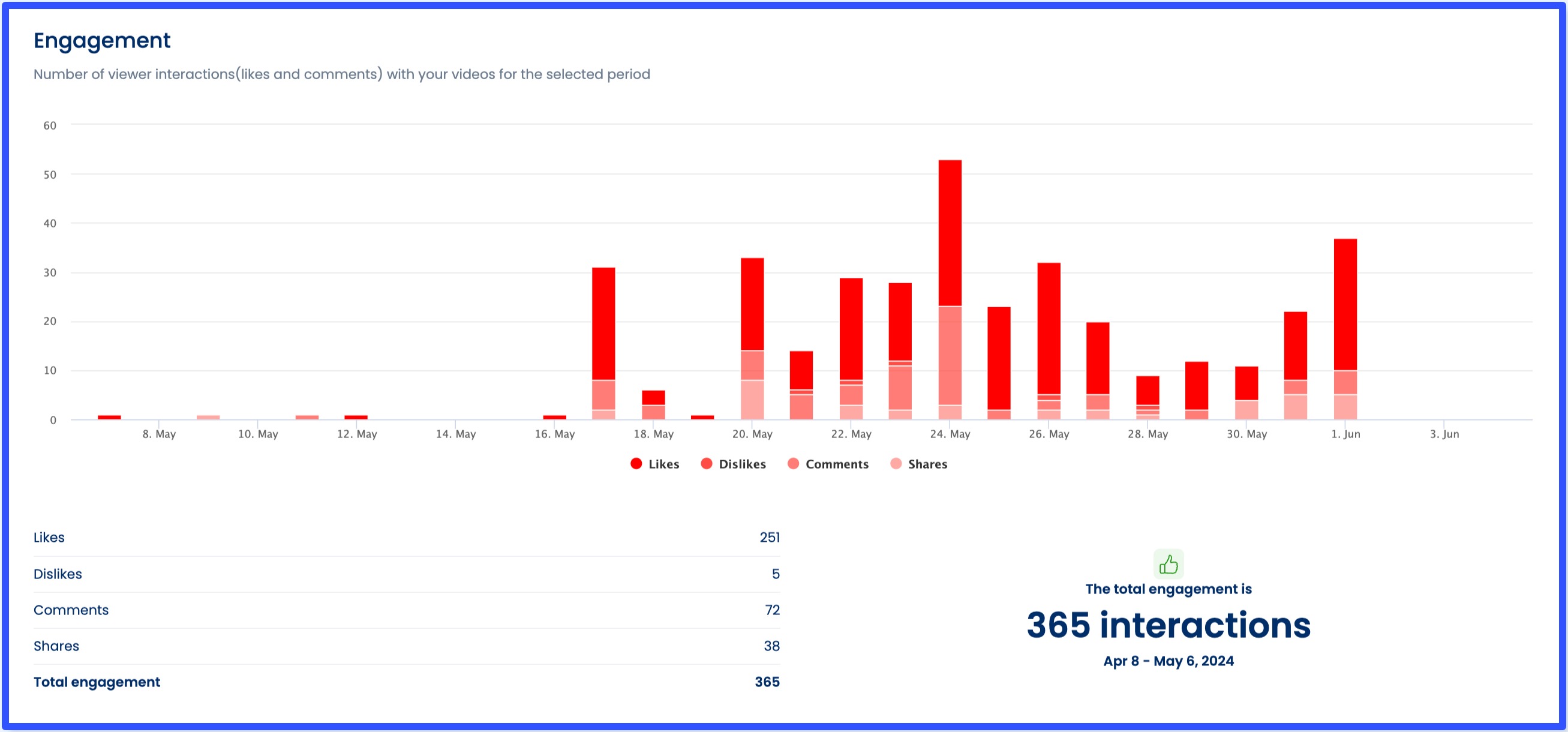
With the Post Performance Report, you’ll see key metrics such as:
- A summary of posts, impressions, engagement, and engagement rate
- Number of published posts to network within the selected date range
- Total posts and engagement by label
- Top performing posts published during the selected period
- Impressions
- Likes
- Comments
- Engagement
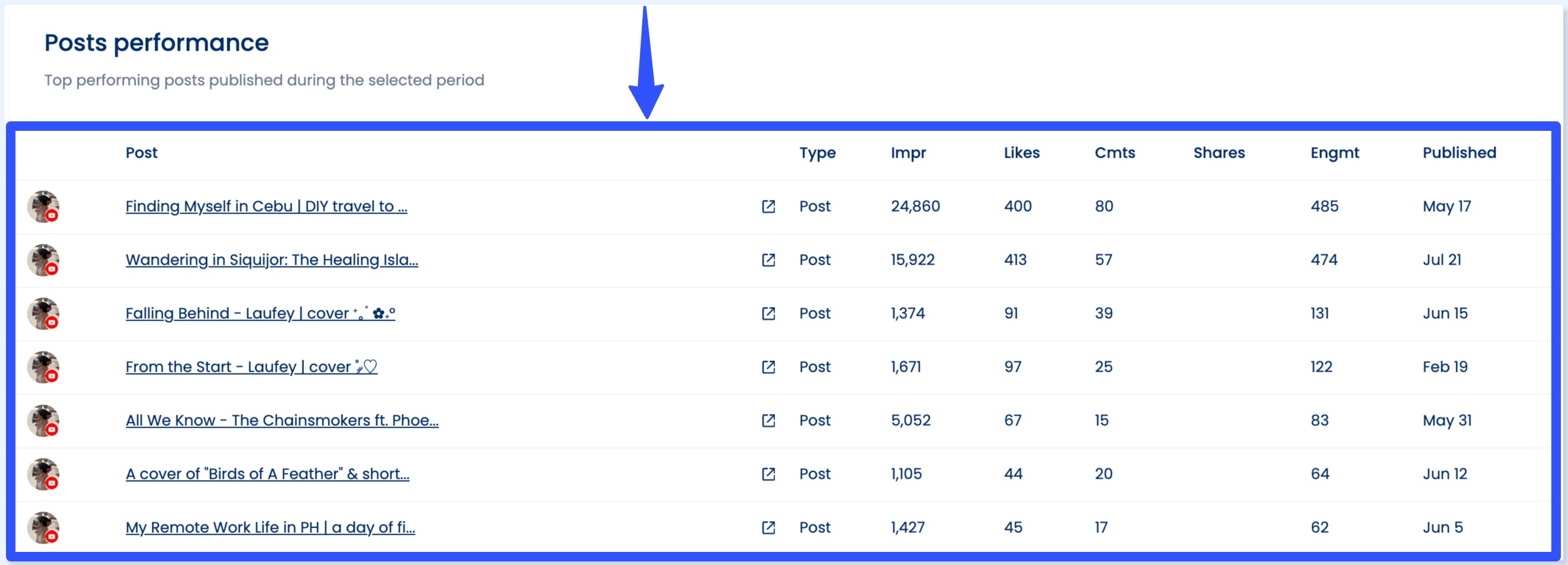
To create custom report templates, click Reports > Report builder.

Select Add template and choose your report type.
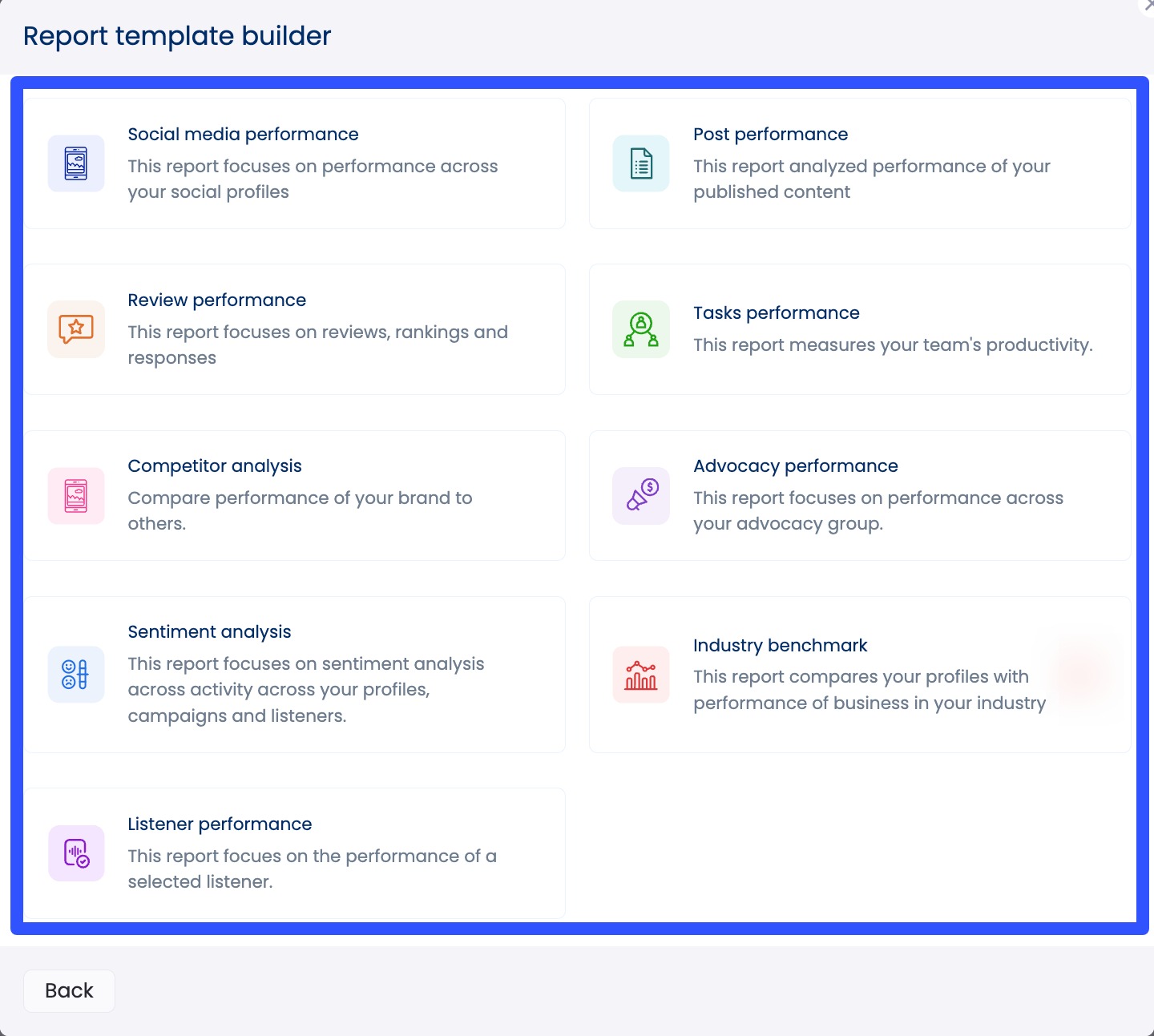
On the Report Builder page, you can start customizing the metrics you want to include in the report, add sections such as a cover page and text, hide sections, and more.
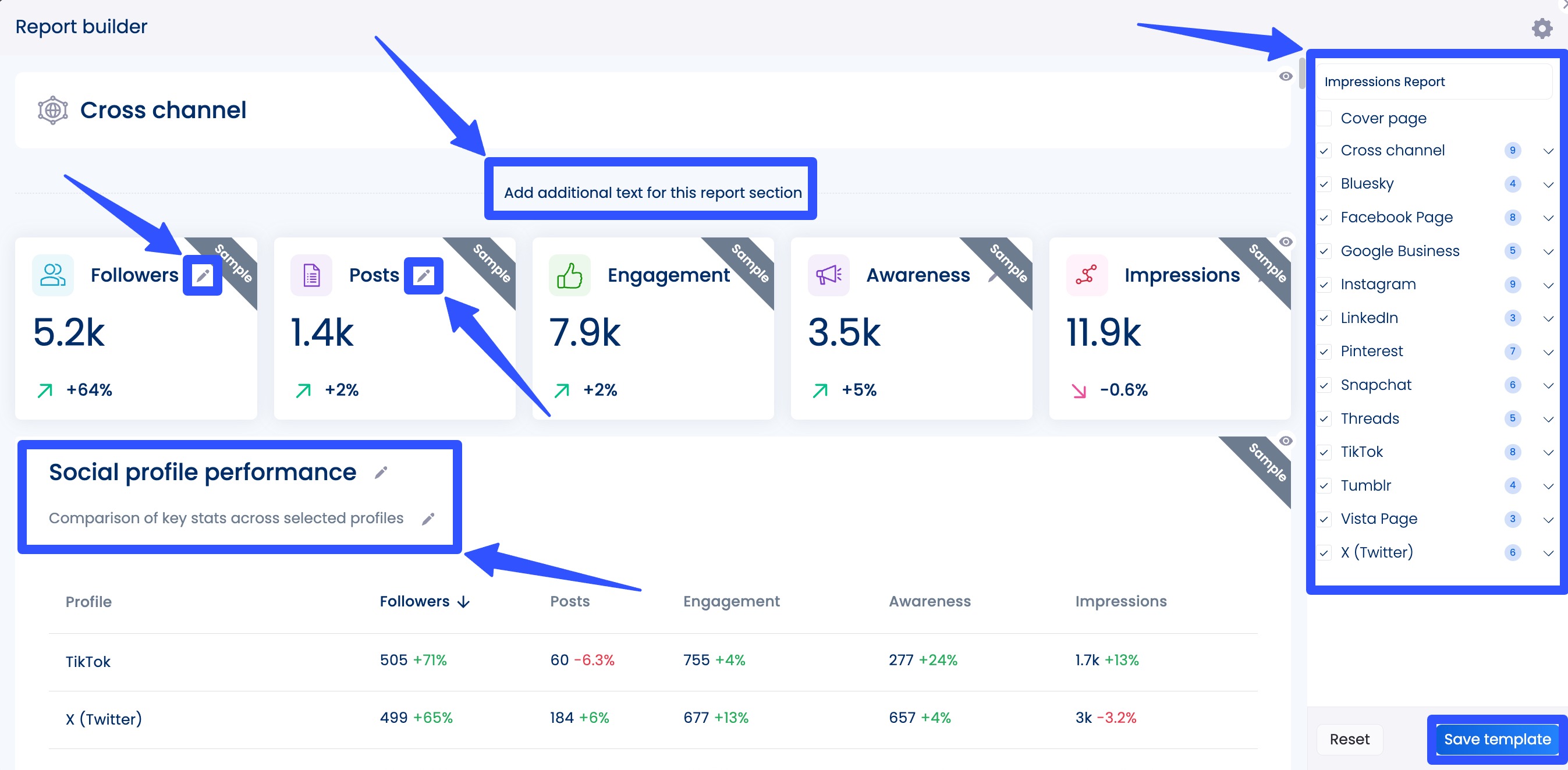
Save your template and run it when needed.
You can schedule all your reports on Vista Social, from social media performance to sentiment analysis and competitor analysis reports.
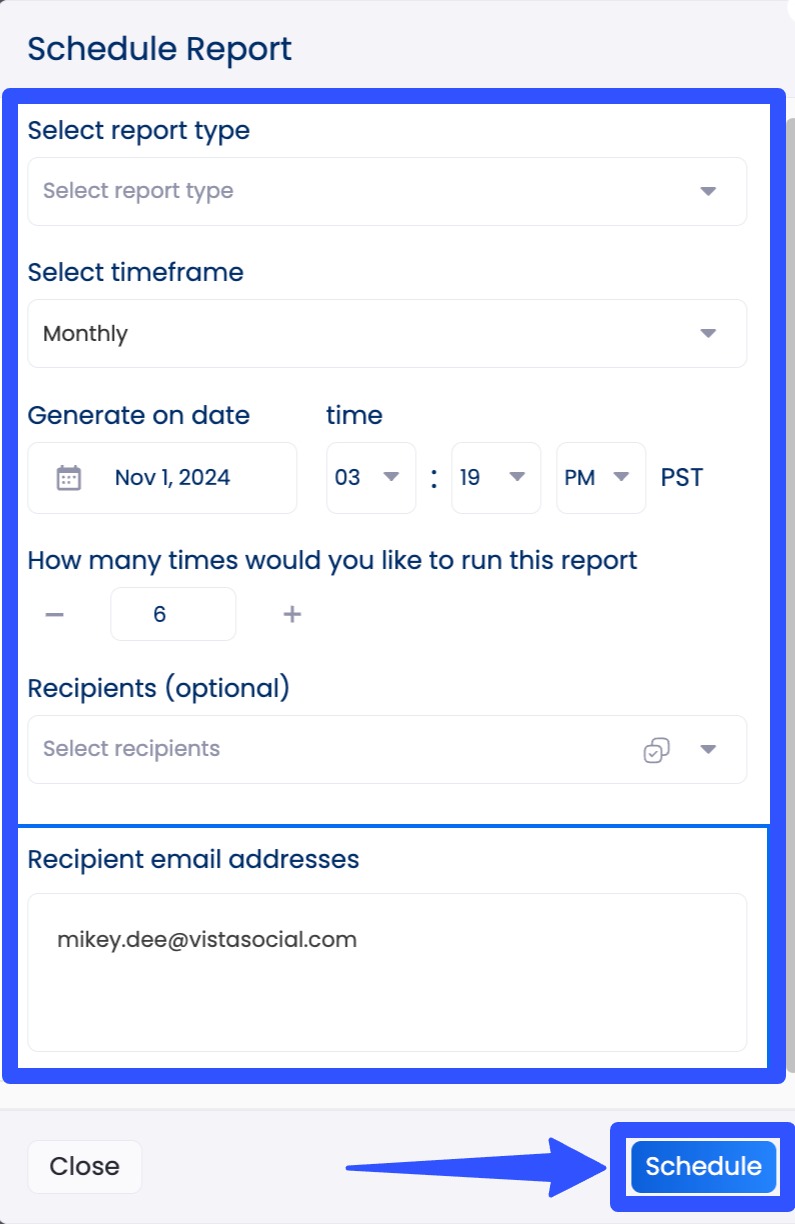
When scheduling your reports and report templates to generate and share with your designated recipients automatically, you must set or add the following.
- Report type
- Timeframe (Monthly or weekly)
- Date and time when the report will be generated
- The number of times you want to run the report
- Recipients (Available users already in your Vista Social account). You can also add non-users by inputting their email addresses
You can see all your past and scheduled reports in your reports calendar.
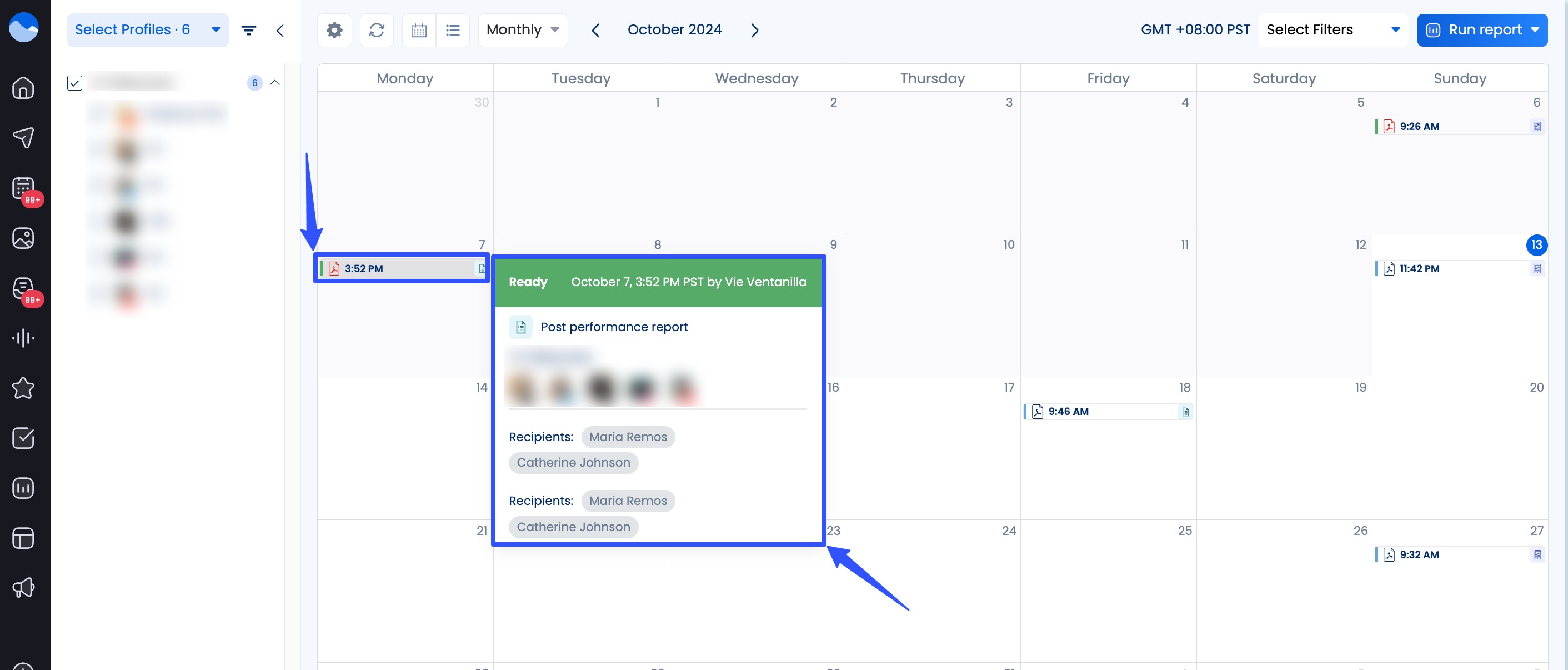
The reports are shareable via exported PDF or CSV files and direct, interactive links.
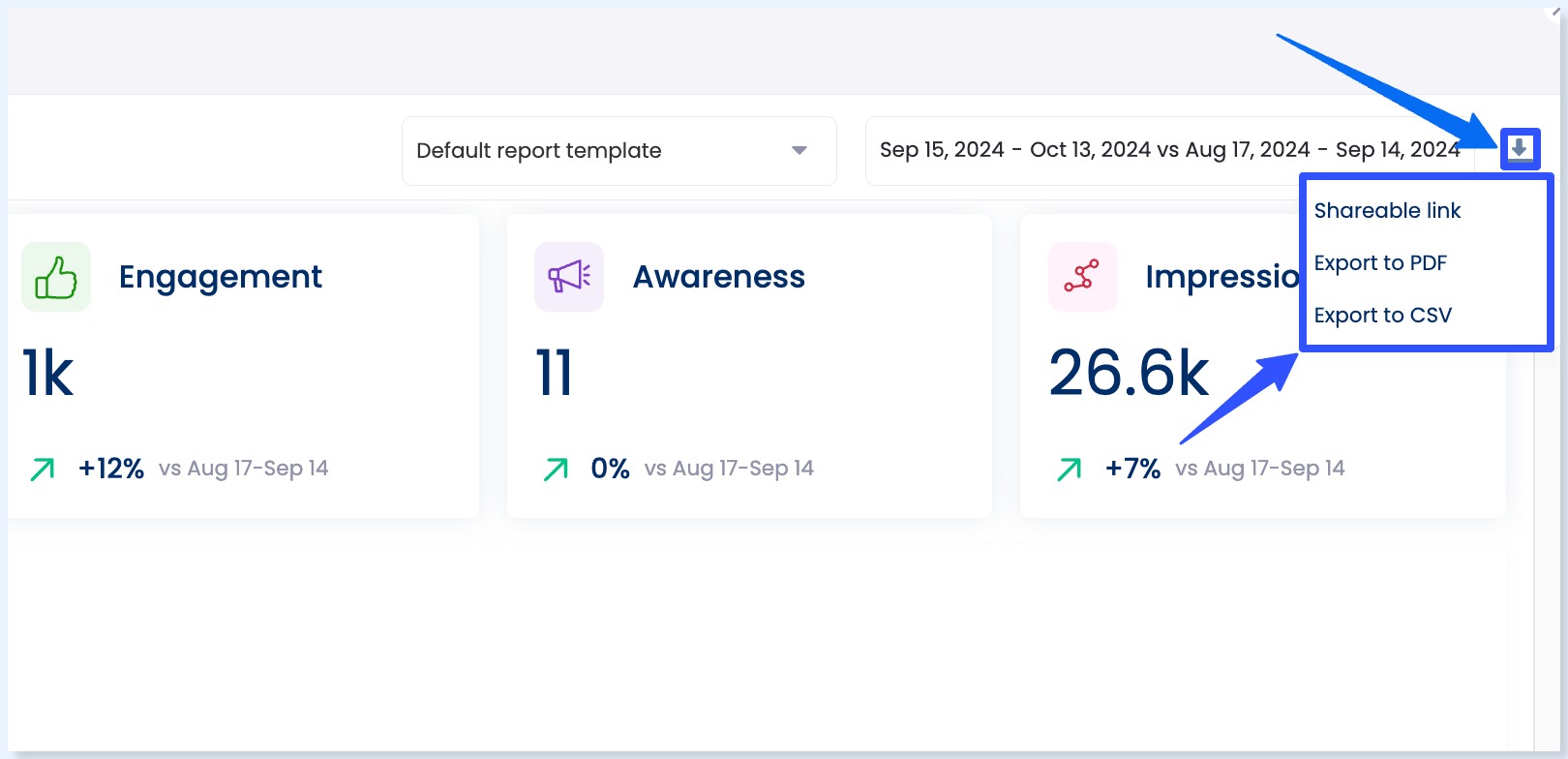
Don’t miss out on Vista Social’s other awesome features, including the following.
- Post scheduling and bulk publishing
- Engagement management via a smart Social Inbox
- Review management
- Social listening with sentiment analysis
- Link in bio tool with custom landing pages (Vista Page)
- AI Assistant
- Employee advocacy
- Optimal posting time suggestions
- DM Automations
- Content calendar
- Post approval workflows
- Hashtag tools
- Post boosting (for supported social networks)
Must read: Hashtag Analytics Guide: With Tips, Tools, and Strategies
How you can leverage YouTube Shorts Analytics to improve content performance
Below are several tips and tricks to help you make sense of all that juicy data and boost your clients’ YouTube Shorts game.
1. Double down on what works
When a particular Short takes off, whether a funny behind-the-scenes moment, a snappy tutorial, or a quirky product tease, that should be your cue.
Dive into the details: what hook did you use? What was the pacing like? Even the music can make a difference.
Then, rinse and repeat with variations.
Give your clients’ viewers what they love, and build a content thread around that proven success.
2. Fix drop off points
Audience retention graphs don’t lie.
If most viewers are bailing before the halfway mark, your client’s YouTube Shorts intro may be dragging, or the message may not be clear.
Remember that the first two to three seconds are make-or-break.
Lead with energy.
Ask a burning question.
Flash an eye-catching visual.
Maintain a brisk pace and eliminate any content that doesn’t deliver immediate value to your clients’ audiences.
3. Time Your Uploads
Analytics can show you when your clients’ viewers are scrolling and ready to watch.
Use that intel to time your YouTube Shorts uploads during peak engagement hours.
Think of it like fishing. Cast your line when the fish are biting.
Posting at the right time can help trigger YouTube’s algorithm to push your clients’ Shorts videos to more eyeballs right out of the gate.
Must read: Best Time to Post on YouTube Shorts [2025]
4. Experiment smartly
Use your clients’ YouTube Shorts Analytics data as a safety net while you test new waters.
Consider experimenting with various camera angles, storytelling techniques, or even humorous takes on trending topics.
Just don’t fly blind and check back on performance.
If a new format bombs, tweak it.
If it explodes, congrats! You’ve just unlocked a new content pillar.
5. Repurpose top shorts
That fire Short video that hit 100K views? Stretch it.
Add commentary and make it a full-length video.
You can also tweak the message slightly and post it to TikTok or Instagram Reels.
Must read: YouTube Shorts vs. TikTok: Which One’s Better?
You can even turn strong comments on your clients’ videos into follow-up Shorts.
Repurposing helps keep your clients’ Shorts videos working harder and saves you from the content hamster wheel.
6. Check where your views come from
Your clients’ YouTube Shorts traffic sources can tell a story.
Are people discovering your clients through the Shorts feed or via search?
If search is big, consider adding keywords to your titles and descriptions.
If external traffic is driving views and engagement, consider ways to amplify these sources, such as increasing cross-promotion, enhancing share buttons, or forming strategic partnerships to boost their impact further.
7. Track what converts
Having many viewers is undoubtedly awesome.
However, the goal isn’t just to increase views for your clients but to help them grow their subscriber base.
The key is to identify which of your clients’ YouTube Shorts generated new subscribers.
What do they have in common?
Maybe it’s the call to action, maybe it’s the tone.
Use this insight to shape content that entertains and builds your clients’ loyal fan bases.
8. Listen to engagement signals
Views show reach, but engagement shows resonance.
Dive into your clients’ YouTube Shorts likes, comments, and shares.
Are people tagging friends? Asking questions? Sharing their own stories? These are signs that your clients’ videos hit the mark.
Use these signals to fuel your next YouTube Shorts ideas for your clients’ campaigns.
9. A/B Test Thumbnails and Titles
Yes, Shorts autoplay, but that doesn’t mean titles and thumbnails don’t matter.
Must read: YouTube Shorts Thumbnail Size: Best Practices + Tips & How-Tos
They can influence whether someone taps to view more or subscribes to your clients’ channels.
Consider trying various approaches, such as curious vs. direct and playful vs. bold.
You can track what performs better and let data guide your efforts.
10. Monitor long term trends
Step back and see the forest for the trees.
Are your clients’ Shorts improving over time?
Is there a format that’s losing steam?
Do your Shorts hashtags drive more views?
Must read: 40+ YouTube Shorts Hashtags: Best, Trending, Viral Hashtags
Get a side-by-side view to track progress month over month.
The comparison helps you spot fatigue in your clients’ usual YouTube Shorts content and adapt before their audiences tune out.
What you can do wrong with YouTube Shorts Analytics
The best tools won’t help if you can’t effectively leverage YouTube Shorts Analytics insights.
Below are common missteps to avoid.
Focusing only on views
Views are flashy and fun, but they’re only the tip of the iceberg.
Must read: Are Your YouTube Shorts Not Getting Views? Here’s Why…
If you’re making decisions based solely on view count, you’re missing the bigger picture.
A Short may rack up thousands of views but lead to zero engagement or conversions.
Dig deeper.
Look at watch time, retention, and comments to see if people are truly connecting with your client’s Shorts content.
Ignoring audience retention
If you’re not monitoring your clients’ audience retention graphs, you may be creating YouTube Shorts introductions that instantly lose your viewers’ attention.
Retention measures the average length of time your clients’ Shorts viewers stay engaged.
If audiences bail early, that’s a huge red flag.
The data can help you shape tighter, more compelling content that keeps your clients’ audiences watching till the end.
Overreacting to the performance of one video
It’s easy to get hyped (or bummed out) over one video’s numbers.
However, content performance can fluctuate due to trends, timing, or plain ol’ chance.
Making strategy changes based on a single YouTube Shorts video is a risky move.
Instead, look at the broader pattern across several uploads before you pivot your entire content strategy.
Misinterpreting traffic sources
Seeing lots of views from the YouTube Shorts feed?
Awesome!
However, don’t ignore other sources.
Don’t make the mistake of misreading this as a cue to stop optimizing titles or ignoring search traffic.
Remember that every source has a role.
Search may have a lower volume but higher intent.
Having lots of traffic coming from the YouTube Shorts feed is great for reach, but it may lack depth.
The key is balance.
Neglecting experiments
Once you find something that works, it’s tempting to stick with it forever.
However, what worked for your clients’ YouTube Shorts and long-form videos last month may not POP today.
To avoid getting stuck in a content rut, regularly test new ideas.
Must read: 9 Epic YouTube Shorts Ideas to Go Viral This 2025
Remember, analytics should empower your creativity, not put it in a box.
Not setting clear goals
Are you trying to grow your clients’ subscriber base, drive traffic, build brand awareness, or just entertain?
If you don’t identify your YouTube Shorts goal, your analytics can’t help you measure success.
Set a clear objective for each YouTube Short to track what’s working and what needs adjustment.
Skipping regular reviews
You can make the most of your clients’ YouTube Shorts analytics data by regularly reviewing it.
Set a schedule (weekly or biweekly) to check key metrics.
Regularly reviewing analytics helps you catch patterns early and make timely adjustments.
This way, you’re not waiting until something breaks, and you’re left doing damage control.
Forgetting to segment data
Lumping all your Shorts together can blur insights.
The key is to segment your clients’ Shorts data by type (such as tutorials, behind-the-scenes, and trends), target audience, or publishing day.
Doing so makes it easier to identify which themes or styles actually work for your clients’ YouTube Shorts content.
FAQs on YouTube Shorts Analytics
How often is Shorts data updated?
YouTube usually updates analytics on a rolling timeline.
In your client’s channel Overview, you can view data from seven days to lifetime, including totals for Shorts views, subscribers, and watch time.
Can you see where your Shorts are being discovered?
Yes.
Under the Reach tab (on the YouTube Analytics page), use the Traffic Source filter and select YouTube Shorts.
From there, you can click See More to view breakdowns by source, such as Shorts feed, search, channel page, suggested, or external.
Are there specific metrics for Shorts that differ from those for regular YouTube videos?
Yes.
Shorts have unique analytics for “Shown in feed,” Shorts-specific views, and quick filters in the Content tab, providing a performance-at-a-glance view based on metrics such as likes, views, and subscribers gained per Short video.
Ready to make YouTube Shorts Analytics work for you?
Understanding YouTube Shorts analytics is one thing—using them to drive real growth is where the magic happens.
Digging into your data and making small but clever tweaks helps you turn your clients’ casual scrollers into loyal subscribers.
And if you’re looking for a modern social media management platform to help streamline, schedule, and supercharge your Shorts (and everything else on your social calendar), Vista Social has your back. Start your Vista Social account now.
